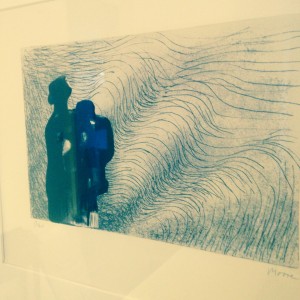# Every Body is a poem
So if the body is a landscape it is also a poem.
There are no strict laws, a right or wrong, a bad style or a sophisticated tone. The grammar of the body has no given syntax, there really is no capital letter beginning, nor full stop ending. Of course the real living body is not in prose. It is not a description or a comprehensive account of what is above and what might be below, the next to, and those abutting, the function explained, the structure named. No, the body is a poem, it has rhythm and cadence, it moves and is different each time it is read, especially when read aloud or committed to memory, toughed and held. Held by the osteopath’s palpatory intention. It really is full of metaphor and impression and expressions. The potency of life is described in its fibres which play a pattern and a rhyme and convey much that is not apparently said.
Thus when we actually experience another’s person, it can not be static anatomy, a chiselled sculpture described as stone and hardness, immutable and immovable; it cannot be purposeful physiology, justifiable reason, explained as necessary and commendable. The osteopath might see the beauty of the body lines , the depth of the tissue narrative, the touch of warmth, perfusion and connection. This person’s poem has meaning and music, it travels and lands and speaks its purpose, a sharing and a transmission. This poems says this and means that and in its entirety gives the whole picture.
The stanzas lead the osteopath, the body worker, on a route, a pilgrimage to a exposure and revealing, a pleading and a trust. Each part is a development of the last part, each layer a new account of the scaffolding and architecture. The shapes of the lines and couplets, arms and extremities, axis and trunk, central and peripheral bring the inquisitor into a cognition or rather a gnostic union with the meaning and manner of health and lived life.
If the body is read as a poem, the osteopath can appreciate the truth that is behind the facts, the evidence based results, the scans and findings, and hold onto the vibrancy and vitality of the body person.
So what does this body poetic feel like? The physical self begins in its own way, maybe declaring its concern, its theme, or perhaps it sets a more universal scene with a statement of reality, its right to life its expression of individual and self. As the body shape changes in active movement the ideas develop and quality and connection of tissues are explored and regarded. A change in mood or a pivot point or disturbance is alluded to, hinted at, glimpsed, and then elaborated and embellished. Comparisons are made, modality of structure modified and a detailed picture emerges.
The body engages with questions of its own, the reader of this poetry is now asked to answer and acknowledge and move on, if allowed. The poem-body brings to a point of decision and revelation and perhaps acquiesces or maybe withholds consent and withdraws. Thus leaving enigmatic space and a readers response is waiting. The words of a body have structure, familiarity and rhythm, and function, purpose and query. They produce the expressions of life, the manifestation of potency, the language of vitality.

